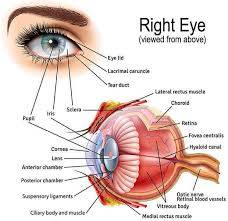Presbyopia is an age-related condition that affects the eye's ability to focus on close objects. Here are 10 causes, 10 effects, and some solutions for presbyopia:
**Causes:**
1. Age: The primary cause of presbyopia is aging, typically starting around age 40.
2. Changes in the eye's lens: The lens becomes less flexible over time, making it harder to focus on close objects.
3. Genetics: A family history of presbyopia can increase your risk.
4. Systemic conditions: Diabetes and cardiovascular diseases can contribute to presbyopia.
5. Medications: Some drugs may exacerbate presbyopia as a side effect.
6. Eye trauma or injury: Damage to the eye can lead to presbyopia.
7. Hormonal changes: Menopause in women can impact vision.
8. Prolonged near work: Extensive reading or screen time may accelerate presbyopia.
9. UV exposure: Excessive sun exposure may contribute to eye aging.
10. Poor nutrition: A diet lacking essential eye-healthy nutrients can be a factor.
**Effects:**
1. Blurred near vision: Difficulty reading, texting, or seeing objects up close.
2. Eyestrain: Frequent squinting or discomfort when focusing on close tasks.
3. Headaches: Struggling to see up close can lead to headaches.
4. Difficulty reading small print: Newspapers, books, and fine print become challenging to read.
5. Reduced night vision: Presbyopia can impact your ability to see clearly in low light.
6. Increased sensitivity to glare: Glare from screens or headlights can be bothersome.
7. Changes in color perception: Some individuals may notice subtle shifts in color vision.
8. Difficulty with close-up tasks: Activities like sewing or threading needles become harder.
9. Decreased depth perception: Difficulty judging distances accurately.
10. Need for reading glasses: Most people with presbyopia require reading glasses.
**Solutions:**
1. Reading glasses: Over-the-counter or prescription reading glasses can correct presbyopia.
2. Bifocal or progressive lenses: Eyeglasses with multiple focal points can help for both near and far vision.
3. Contact lenses: Multifocal contacts can be an option for some people.
4. Monovision: Wearing one contact lens for distance and the other for near vision.
5. Laser surgery: Procedures like LASIK or PRK can correct presbyopia.
6. Refractive lens exchange: Replacing the eye's natural lens with an artificial one.
7. Lifestyle adjustments: Adequate lighting and font enlargement for reading.
8. Eye exercises: Certain exercises may help improve eye flexibility.
9. Regular eye exams: Routine check-ups can monitor and address changes in vision.
10. Prevention: Protect your eyes from UV exposure and maintain a healthy diet rich in eye-boosting nutrients.
Consulting with an eye care professional is essential to determine the best solution for your specific case of presbyopia.


